Active ingredients: Cloperastine
Seki 10 mg coated tablets
Seki 35.4mg / ml oral drops, suspension
Seki children 4.4 mg chewable tablets
Seki 3.54 mg / ml syrup
Why is Seki used? What is it for?
Seki is a medicine that acts as a cough suppressant.
Seki is used to calm the urge to cough.
Talk to your doctor if you do not feel better or if you feel worse after a short period of treatment.
Contraindications When Seki should not be used
Do not take Seki
- if you are allergic to cloperastine or any of the other ingredients of this medicine
Precautions for use What you need to know before taking Seki
Talk to your doctor or pharmacist before taking Seki.
Interactions Which drugs or foods can change the effect of Seki
Tell your doctor or pharmacist if you are taking, have recently taken or might take any other medicines.
Avoid the simultaneous use of Seki with:
- antihistamine medicines (used to treat allergies);
- anticholinergic medicines;
- sedative medicines.
Seki with food and alcohol
It is not recommended to take Seki with meals (see "How to take Seki").
Avoid drinking alcoholic beverages while taking Seki.
Warnings It is important to know that:
Pregnancy and breastfeeding
If you are pregnant or breast-feeding, think you may be pregnant or are planning to have a baby, ask your doctor or pharmacist for advice before taking this medicine.
Avoid taking Seki in the first months of pregnancy; in the further period, take this medicine only when clearly needed and only under the direct supervision of your doctor.
It is unknown whether the medicinal product and / or its metabolites are excreted in human milk.
Do not take Seki while breastfeeding.
Driving and using machines
Seki can make you sleepy. Be careful if you intend to drive vehicles or attend to operations that require integrity of the degree of vigilance.
Seki contains sucrose
- The tablets contain 48 mg of sucrose per dose.
- The drops contain about 140 mg of sucrose per ml.
- The chewable tablets contain approximately 36.8 mg of sucrose per serving.
- The syrup contains 450 mg of sucrose per ml.
If you have been told by your doctor that you have "intolerance to some sugars, contact your doctor before taking this medicinal product.
Seki contains saccariose. To be taken into consideration in people with diabetes mellitus or who follow low-calorie (hypocaloric) diets.
Seki (syrup and drops) contains parahydroxybenzoates (parabens)
The syrup and drops contain methyl-para-hydroxybenzoate and propyl-para-hydroxybenzoate (E218 and E216) which can cause allergic reactions (even delayed)
Dose, Method and Time of Administration How to use Seki: Posology
Always take this medicine exactly as described in this leaflet or as directed by your doctor or pharmacist. If in doubt, consult your doctor or pharmacist. The recommended doses are:
Adults
Seki 10 mg coated tablets:
2 tablets in the evening at bedtime, 1 tablet in the morning and 1 tablet in the afternoon, preferably between meals.
Seki 35.4 mg / ml oral drops, suspension
30 drops in the evening before bedtime, 15 drops in the morning and 15 drops in the afternoon.
Seki 3.54mg / ml syrup
2 small glasses in the evening at bedtime, 1 small glass in the morning and 1 small glass in the afternoon (fill the glass included in the package up to the "Adults" mark; one "Adult" mark corresponds to 7.5 ml of syrup).
Use in children
Seki children 4.4 mg chewable tablets:
- children up to 7 years: 2 tablets in the evening at bedtime, 1 tablet in the morning and 1 tablet in the afternoon.
- children after 7 years: 4-6 tablets in the evening at bedtime, 2-3 tablets in the morning and 2-3 tablets in the afternoon.
Seki 35.4 mg / ml oral drops, suspension
- children after 2 years: 14 drops in the evening before going to bed, 8 drops in the morning and 8 drops in the afternoon.
- children under 2 years: proportionally lower doses.
Seki 3.54mg / ml syrup
- children after 2 years: 2 small glasses in the evening before going to bed, 1 small glass in the morning and 1 small glass in the afternoon (fill the glass included in the package up to the "Children" mark; one "Children" mark corresponds to 3.75 ml of syrup ).
It is not recommended to take the medicine with meals.
Instructions for opening the syrup bottle
- Press on the capsule and unscrew in the direction indicated by the arrow (see fig. 1).
- To close the bottle, screw it tightly in the opposite direction to the opening (see fig. 2).
Instructions for opening the drop bottle and for using the dropper
- Press on the bottle cap and turn in the direction indicated by the arrow (see fig. 1).
- Remove the capsule.
- Take the dropper and unscrew the protective sheath of the dip tube.
- Screw the dropper onto the bottle (see figure 2).
- To use the dropper, press on the capsule and turn in the direction indicated by the arrow (see fig. 3).
- Put the dropper back on the bottle by simply screwing the cap back on (see fig. 2).
Overdose What to do if you have taken too much Seki
If you take more Seki than you should If you have accidentally swallowed / taken too much Seki, notify your doctor immediately or go to the nearest hospital.
If you have any further questions on the use of this medicine, ask your doctor or pharmacist.
If you forget to take Seki Do not take a double dose to make up for a forgotten dose.
Side Effects What are the side effects of Seki
Like all medicines, this medicine can cause side effects, although not everybody gets them.
Uncommon (may affect up to 1 in 100 patients)
- drowsiness,
- dry mouth.
Frequency not known (frequency cannot be estimated from the available data)
- severe rapid allergic reactions (anaphylactic / anaphylactoid reaction),
- urticaria.
Compliance with the instructions contained in the package leaflet reduces the risk of undesirable effects.
Reporting of side effects
If you get any side effects, talk to your doctor or pharmacist. This includes any possible side effects not listed in this leaflet. You can also report side effects directly via the national reporting system at: https://www.aifa.gov.it/content/segnalazioni-reazioni-avverse. By reporting side effects you can help provide more information about safety of this medicine.
Expiry and Retention
Keep this medicine out of the sight and reach of children
Do not use this medicine after the expiry date which is stated on the package after "EXP". The expiry date refers to the last day of that month. The expiry date refers to the product in intact packaging, correctly stored.
Store the coated tablets at a temperature not exceeding 25 ° C.
Keep the syrup at a temperature not exceeding 30 ° C.
Do not throw any medicines via wastewater or household waste. Ask your pharmacist how to throw away medicines you no longer use. This will help protect the environment.
What does Seki
Seki 10 mg coated tablets
- The active ingredient is cloperastine hydrochloride. One tablet contains 10 mg of cloperastine hydrochloride.
- The other ingredients are: microcrystalline cellulose, silica, talc, magnesium stearate, hypromellose, povidone, macrogol 4000, sucrose, magnesium carbonate, titanium dioxide, erythrosine (E127).
Seki 35.4 mg / ml oral drops, suspension
- The active ingredient is cloperastine fendizoate. 100 ml contain 3.54g of cloperastinefendizoatopareous to 1.8g of cloperastine.
- The other ingredients are: polyoxyethylene stearate, silica, methyl parahydroxybenzoate, sucrose, banana flavor, purified water.
Seki children 4.4 mg chewable tablets
- The active ingredient is cloperastinafendizoate. One tablet contains 4.4 mg of cloperastinefendizoate.
- The other ingredients are: sucrose, mannitol, microcrystalline cellulose, starch, methylcellulose, magnesium stearate, talc, strawberry essence.
Seki3.54 mg / ml syrup
- The active substance is cloperastinafendizoate. 100 ml contains 354 mg of cloperastinefendizoato, equal to 180 mg of dicloperastine.
- The other ingredients are: microcrystalline cellulose, carmellose sodium, polyoxyl-40-stearate, sucrose, methyl-para-hydroxybenzoate, propyl-para-hydroxybenzoate, banana essence, purified water.
What Seki looks like and contents of the pack
Seki comes in the form of:
Coated tablets - 20 tablets
Oral drops, suspension - bottle of 25 ml
Chewable tablets- 20 or 60 tablets
Syrup - bottle of 200 ml
Source Package Leaflet: AIFA (Italian Medicines Agency). Content published in January 2016. The information present may not be up-to-date.
To have access to the most up-to-date version, it is advisable to access the AIFA (Italian Medicines Agency) website. Disclaimer and useful information.
01.0 NAME OF THE MEDICINAL PRODUCT
SEKI
02.0 QUALITATIVE AND QUANTITATIVE COMPOSITION
SEKI 10 mg coated tablets
One tablet contains:
active principle: cloperastine hydrochloride 10 mg;
excipient with known effect: sucrose
SEKI 35.4 mg / ml oral drops, suspension
100 ml contain:
active principle: cloperastine fendizoate 3.54 g equal to cloperastine 1.8 g;
excipients with known effects: sucrose, parahydroxybenzoates
1 drop (equivalent to 0.05 ml) contains 1.8 mg of cloperastine fendizoate equal to 0.9 mg of cloperastine
SEKI children 4.4 mg chewable tablets
One tablet contains:
active principle: cloperastine fendizoate 4.4 mg;
excipient with known effect: sucrose
For the full list of excipients, see section 6.1
03.0 PHARMACEUTICAL FORM
Oral drops, suspension.
Coated tablet.
Chewable tablet.
04.0 CLINICAL INFORMATION
04.1 Therapeutic indications
Cough suppressant.
04.2 Posology and method of administration
Daily dose:
ADULTS:
Coated tablets: 2 tablets in the evening at bedtime; 1 tablet in the morning, 1 tablet in the afternoon, preferably between meals.
Drops: 30 drops in the evening before going to bed, 15 drops in the morning, 15 drops in the afternoon.
CHILDREN:
Chewable tablets: up to 7 years: 2 tablets in the evening at bedtime; one tablet in the morning; one tablet in the afternoon.
After 7 years: 4-6 tablets in the evening at bedtime; 2-3 tablets in the morning; 2-3 tablets in the afternoon.
Drops: 14 drops in the evening before going to bed, 8 drops in the morning, 8 drops in the afternoon. Under the age of two: proportionally lower doses.
04.3 Contraindications
Hypersensitivity to the active substance and to any of the excipients.
04.4 Special warnings and appropriate precautions for use
Important information about some of the ingredients
Sucrose
• the tablets contain 48 mg of sucrose per dose
• chewable tablets contain approximately 36.8 mg of sucrose per dose
• the drops contain about 140 mg of sucrose per ml
Patients with rare hereditary problems of fructose intolerance, glucose-galactose malabsorption or sucrase isomaltase insufficiency should not take this medicine.
In the case of diabetic subjects or those who follow low-calorie diets, this should be borne in mind
that the preparation contains sugar.
The drops also contain parahydroxybenzoates (E218 and E216) which can cause allergic reactions, including delayed type.
04.5 Interactions with other medicinal products and other forms of interaction
No human interaction studies have been conducted.
The concomitant use of Seki with:
• alcohol
• antihistamines
• anticholinergics
• sedatives
It is not known whether in pediatric age the extent of the above interactions is similar to that in adulthood. There is no information regarding possible drug interactions with laboratory tests.
No information is available on the interaction of cloperastine with food, therefore it is not recommended to take it with meals.
04.6 Pregnancy and lactation
Pregnancy
There is no information available on the use of Seki in pregnancy.
Although the toxicity studies carried out during pregnancy in animals have not shown teratogenic activity and fetotoxicity, it is a good prudent rule not to take the drug in the first months of pregnancy and in the further period only in case of actual need under the direct control of the doctor.
Feeding time
It is not known whether the medicinal product and / or its metabolites are excreted in human milk; as a risk to the suckling child cannot be excluded, Seki should not be used during breastfeeding.
04.7 Effects on ability to drive and use machines
Since the product may, albeit rarely, cause drowsiness, those who may be driving vehicles or attending operations requiring integrity of vigilance must be warned of this.
04.8 Undesirable effects
Below is a table relating to the frequency of undesirable effects:
Frequency: very common (≥ 1/10); common (≥ 1/100,
Within each frequency group undesirable effects are presented in descending order of severity.
Pediatrics
Clinical studies and post-marketing surveillance with cloperastine revealed no relevant differences in the nature, frequency, severity and reversibility of adverse reactions between the adult and pediatric population.
04.9 Overdose
Adults
No cases of savdose have been reported in adults treated with Seki.
Children
There was a reported case of overdose in a child who took a dose of 40ml of Seki syrup. No associated adverse reactions were reported. The patient was treated with two tablespoons of activated charcoal.
Treatment of overdose
Gastric lavage is useful if performed within a short time after ingestion of the drug. The patient must be kept calm to minimize any signs of central overexcitation: in this case the use of benzodiazepines can be useful.
05.0 PHARMACOLOGICAL PROPERTIES
05.1 Pharmacodynamic properties
Pharmacotherapeutic group: Cough suppressants, excluding combinations with expectorants
ATC code: R05DB21
Cloperastine is a synthetic compound which chemically corresponds to 1- [2- (p-chloro-alpha-phenylbenzyloxy) -ethyl] piperidine hydrochloride or fendizoate. It is a drug with central antitussive activity, as well as anti-edema activity and relaxing the bronchial muscles. The activity of SEKI was always higher than that of dextromethorphan. Unlike codeine, cloperastine has no narcotic activity, acts directly on the cough center, has no local anesthetic activity, and does not depress the breath center.
05.2 Pharmacokinetic properties
Kinetic studies have documented that the serum peak is reached between 60 and 90 minutes and that the plasma levels of the drug are still measurable at the eighth hour after intake. Cloperastine is completely metabolised within a short time and the metabolites largely eliminated in the urine.
05.3 Preclinical safety data
Acute and chronic toxicity studies conducted in rats have shown that the LD 50 of oral cloperastine hydrochloride is 1.9 g / kg, of cloperastine fendizoate is greater than 2 g / kg with a very favorable therapeutic index.
06.0 PHARMACEUTICAL INFORMATION
06.1 Excipients
SEKI 10 mg coated tablets
microcrystalline cellulose, silica, talc, magnesium stearate, hypromellose, povidone, macrogol 4000, sucrose, magnesium carbonate, titanium dioxide, erythrosine (E127).
SEKI 35.4 mg / ml oral drops, suspension
polyoxyethylene stearate, silica, methyl-para-hydroxybenzoate, sucrose, banana flavor, purified water.
SEKI children 4.4 mg chewable tablets
sucrose, mannitol, microcrystalline cellulose, starch, methylcellulose, magnesium stearate, talc, strawberry essence.
06.2 Incompatibility
None known.
06.3 Period of validity
Coated tablets, chewable tablets: 5 (five) years
Drops: 3 years (three)
The expiry date indicated refers to the products in intact packaging, correctly stored.
06.4 Special precautions for storage
Chewable drops and tablets: this medicine does not require any special storage conditions.
Coated tablets: Store at a temperature not exceeding 25 ° C.
06.5 Nature of the immediate packaging and contents of the package
Coated tablets: pack of 20 tablets of 10 mg in blister packs.
Drops: 25 ml pack in amber glass bottle with safety cap and dropper pump in polythene with safety closure.
Chewable tablets: pack of 20 tablets in blister packs.
Chewable tablets: pack of 60 tablets in blister packs.
06.6 Instructions for use and handling
INSTRUCTIONS FOR OPENING THE DROP BOTTLE AND USING THE DROPPER
1. Press down on the bottle cap and turn into
direction indicated by the arrow.
2. Remove the capsule.
3. Take the dropper and unscrew the sheath of
protection of the float.
4. Screw the dropper onto the bottle.
5. To use the dropper, press on the capsule and
turn in the direction indicated by the arrow.
6. Simply put the dropper back on the bottle
screwing the capsule back on.
07.0 MARKETING AUTHORIZATION HOLDER
Zambon Italia s.r.l.
Via Lillo del Duca, 10 - 20091 Bresso (MI)
08.0 MARKETING AUTHORIZATION NUMBER
SEKI 10 mg coated tablets 20 tablets A.I.C. n. 024427015
SEKI 35.4 mg / ml oral drops, suspension 1 bottle of 25 ml A.I.C. n. 024427054
SEKI children 4.4 mg chewable tablets 20 tablets A.I.C. n. 024427027
SEKI children 4.4 mg chewable tablets 60 tablets A.I.C. n. 024427039
09.0 DATE OF FIRST AUTHORIZATION OR RENEWAL OF THE AUTHORIZATION
Coated tablets and chewable tablets:
First authorization: 25 June 1981
Renewal 1 June 2010
Drops
First authorization: 15 June 1984
Renewal 1 June 2010
10.0 DATE OF REVISION OF THE TEXT
02 December 2015

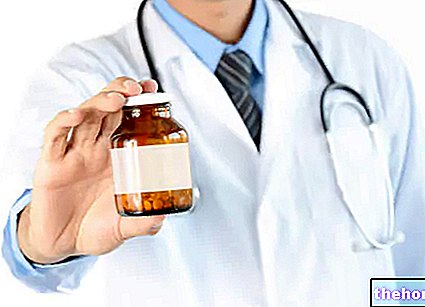
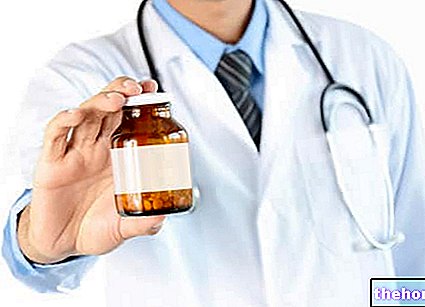
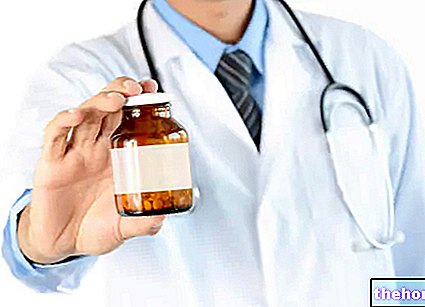

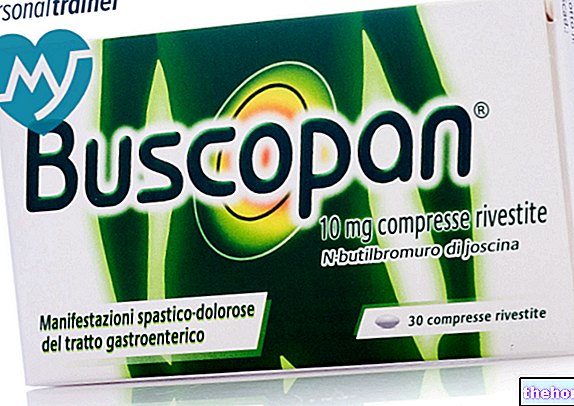
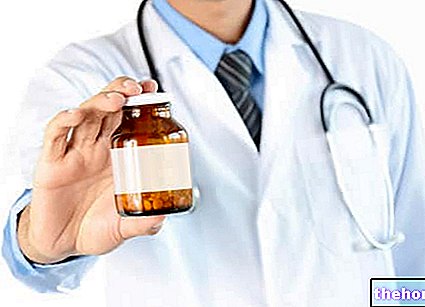
















-nelle-carni-di-maiale.jpg)




